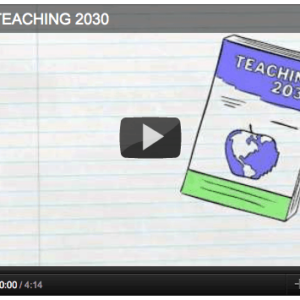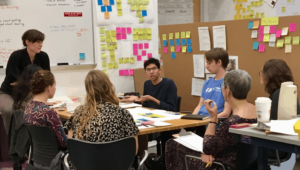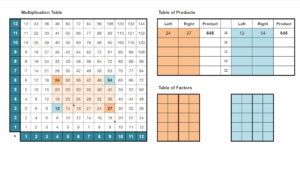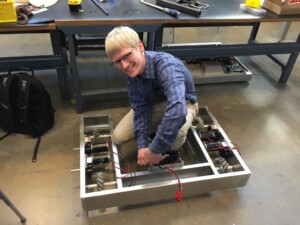Confronting the 15,000-Hour Problem
 By Barnett Berry
By Barnett Berry
Imagine a new teaching profession — the one that students of today and tomorrow deserve. Here’s how “schools” and “teaching” could look:
- In transformedlearning environments, digital tools enable students to learn 24/7 and use skills demanded by local and global economies. Meanwhile, similar technologies allow teachers to learn from each other anywhere, at any time.
- Expert teachers create seamless connections in and out of cyberspace. They bridge students’ virtual learning with what goes on in brick-and-mortar schools (including afterschool programs to deepen and extend learning for our most vulnerable students).
- Students learn from collaborative teams of teachers with varied strengths and roles.This is made possible by a career matrix (as opposed to the traditional career ladder) that includes differentiated pathways. The system places a premium on the spreading of teacher expertise—and is structured to encourage our best teachers to remain in the profession.
More than 600,000 “teacherpreneurs” are making a difference in our schools. These are effective teachers who continue to teach students regularly, but also work part-time on results-oriented efforts to improve student learning. They might design new instructional programs, orchestrate community partnerships, develop digital learning tools, and advance new policies and practices. Teacherpreneurs will be the “highest-paid anybodies” in a school district—and their roles will finally blur the lines of distinction between those who teach in schools and those who lead.
These four possibilities, described more fully in TEACHING 2030, a new book I penned with 12 expert teachers, can help us imagine what teaching could look like. Here’s the catch: we have to move past the tired 20th century struggles over how we recruit, train, and pay teachers. Yes, some serious politics are involved, as described vividly, if not always accurately, in Steven Brill’s new book, Class Warfare.
But we must also contend with the 15,000-hour problem. Most Americans have attended schools for 13 years—and have watched teachers teach for more than 15,000 hours, usually in the company of 25 or 30 other students (40 or 50 in hard times). And while most Americans may want improved schools and better teaching, they do not want teaching and learning to look all that different from when they were in school themselves. The public’sfamiliarity with teaching reifies expectations. It may even breed contempt for the specialized skills that effective teachers and administrators need to develop—after all, an expert teacher can make the job look easy.
But the 15,000 hour problem besets teachers and administrators as well. Almost four decades ago, Dan Lortie, the well-knowneducation sociologist, described the 15,000 problem as the “apprenticeship of observation”—when teachers and administrators come into the profession thinking they already know how to teach and lead. In fact, since many educators have had the experience of “liking school” as K-12 students, they often resist major transformative changes. They may not want to think differently about teachers’ roles, teaching methods, and how and when students are expected to learn.
So what do we do? We shouldn’t simply seek more recruits from alternative routes. Plenty of evidence suggests that even teachers and administrators from “alternative routes” reify the current system of teaching and learning.
Instead, we should consider how teachers’ and administrators’ preparation can set the stage for a new expectations about what schools and learning look like.
And now is the time for public engagement campaign that informs and inspires, helping Americans shift their own beliefs about what schools and teachers can accomplish—and how they should go about it.
Selling a bold new vision of teaching and learning is far from impossible.
The American people have the capacity to let go of old patterns of thinking when the evidence is compelling and well-presented. Consider how our nation’s adult population changed its collective mind about cigarette smoking. In the early 1960s, cigarette smoking was common. In ads, the Marlboro Man (portrayed as a rugged cowboy) gave cigarettes a free-spirited, back-to-basics, all-American image. Then studies began to identify empirical links between smoking and cancer. Early anti-smoking commercials, starring “Johnny Smoke,” showed cowboys keeling over with poisonous fumes in their lungs, parodying the Marlboro Man. Public awareness grew and behavior began to change, as TV ads for cigarettes were banned and the Surgeon General’s warnings on cigarette packages became more stark and visible. Within 40 years, the percentage of American adults smoking cigarettes decreased from 45% to 20%.
An inefficient public education system mired in 20th-century debates may not be blackening our lungs. But the status quo is doing something just as serious: failing our students, our communities, and our democracy. We must help the public understand what is possible. We must get past the 15,000-hour conundrum. We must work together to create the transformed system of teaching and learning that 21st-century students deserve.





0 Comments
Leave a Comment
Your email address will not be published. All fields are required.